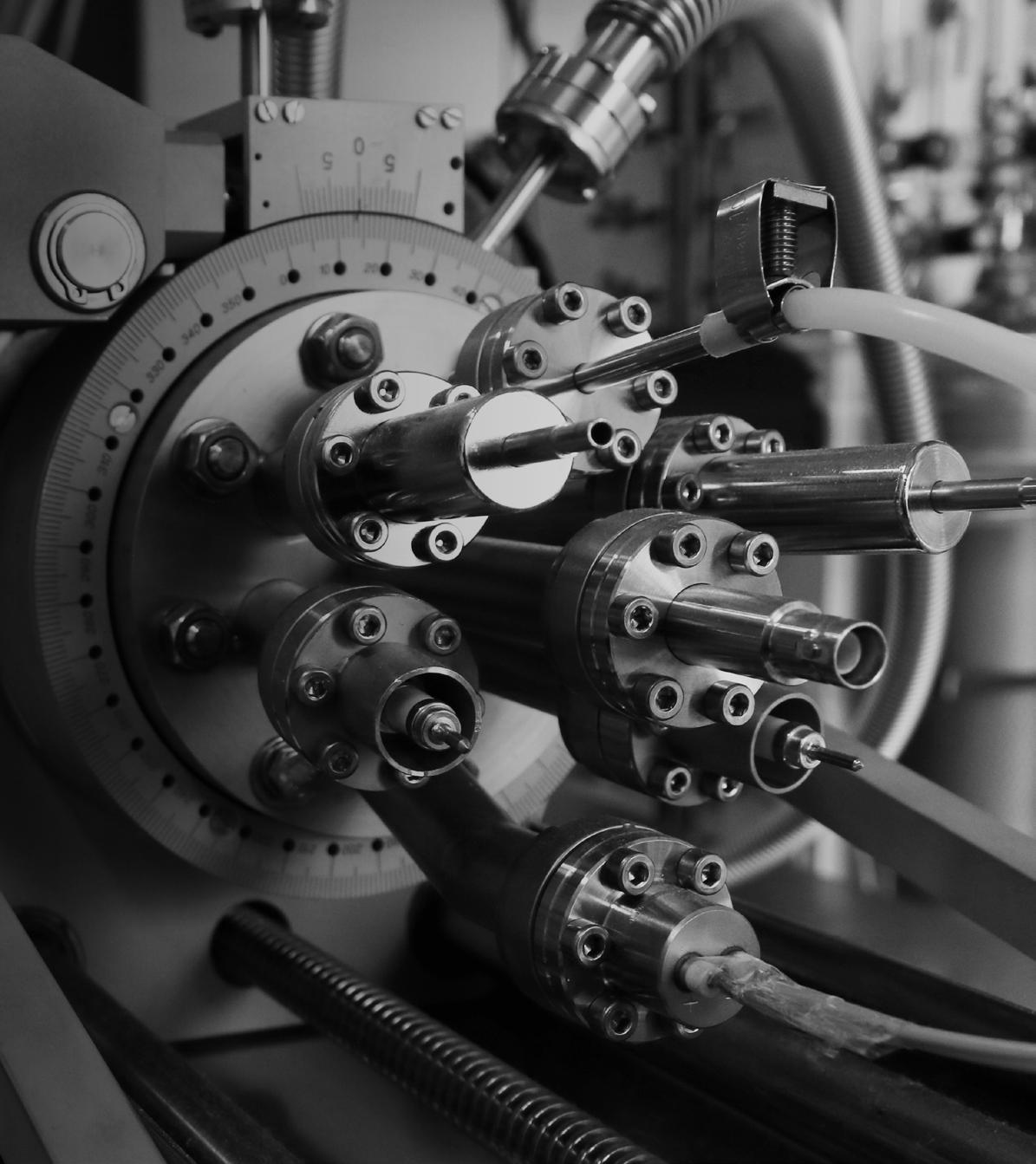NEWCASTLE INSTITUTE FOR ENERGY AND RESOURCES
TECHNICAL PROSPECTUS







The Newcastle Institute for Energy and Resources (NIER) was established in 2010 with a clear agenda to deliver transformational research and innovation for the energy and resource sectors. NIER has since evolved to become a flagship research institute focused on supporting sustainable advancements in energy, resources, food and water. These are sectors of global significance, and NIER’s research teams are helping to improve social, economic and environmental outcomes with solutions for a sustainable future.
The NIER precinct is a space for researchers, students and industry partners to come together to test and validate ideas, technologies and services. It comprises extensive mineral, chemical and related technical laboratories, industrial-scale pilot plant workshops, large-scale demonstration units and collaborative workspaces for over 300 people.
The Precinct is designed to accommodate diverse and evolving research capacity, across several key sectors and provides the facilities needed by research teams to understand the effectiveness and potential impact of innovations - an important step in working towards the mobilisation of market-ready technologies.

NIER’s networks of knowledge propel research that responds to local, national and global needs.
Our unique engagement model connects multidisciplinary academic teams with industry to collaboratively deliver market-led solutions for critical world challenges.
We are dedicated to training the specialised workforce who will be needed to meet the needs of future industries, and students at NIER benefit from exposure to industry and world-class researchers while working to solve realworld problems.
NIER delivers solutions across four thematic research areas of increasing national and international importance:
• Productivity & Efficiency
Technologies & Utilisation
• Industrial Innovation
• Sustainability & Security

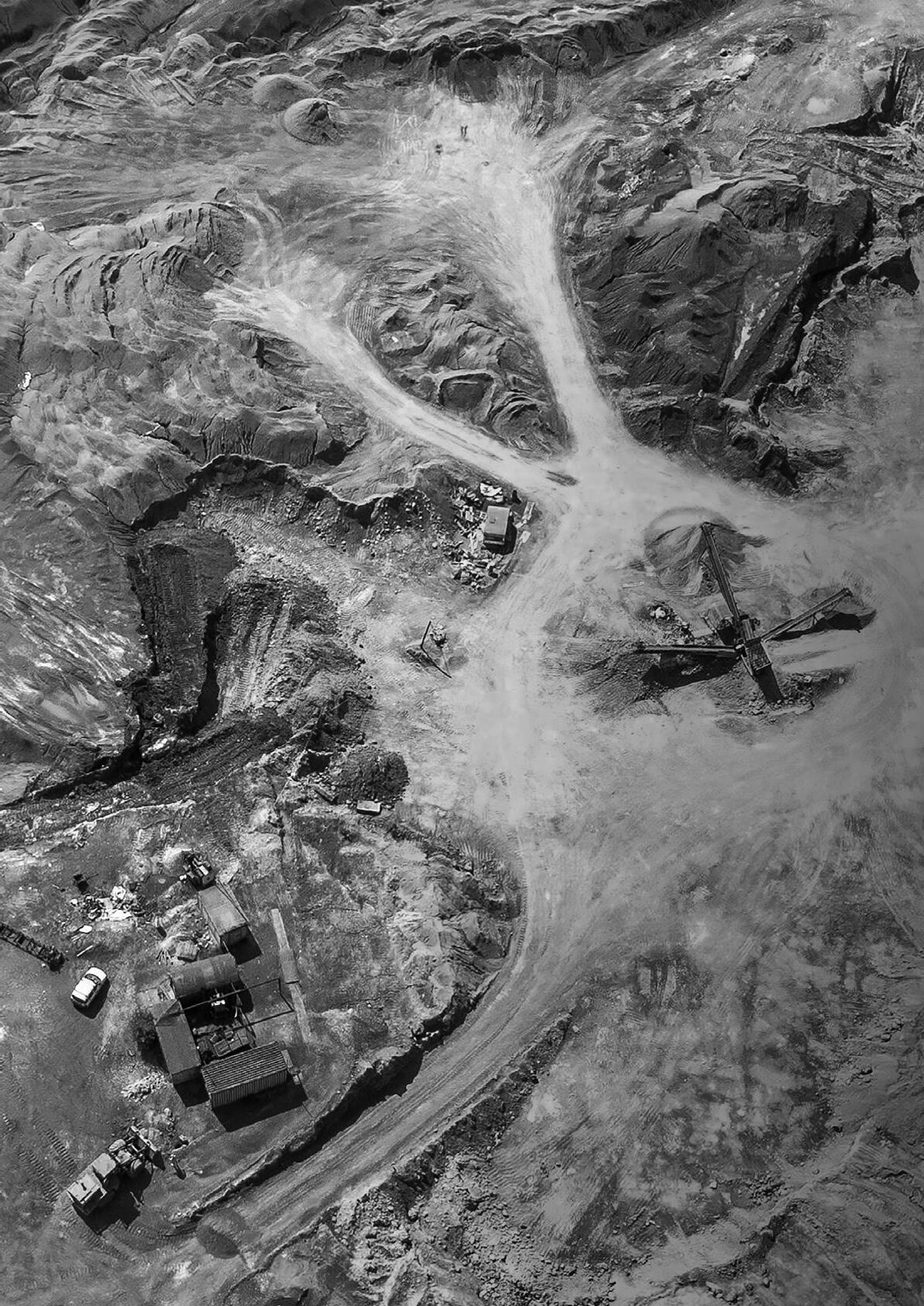
SOLUTIONS TO IMPORTANT CHALLENGES FACING OUR MINERALS, GAS AND WATER RESOURCE SECTORS.
• Advanced Particle Beneficiation
• Iron Ore Sintering, Cokemaking, Conventional & Low-Carbon Ironmaking
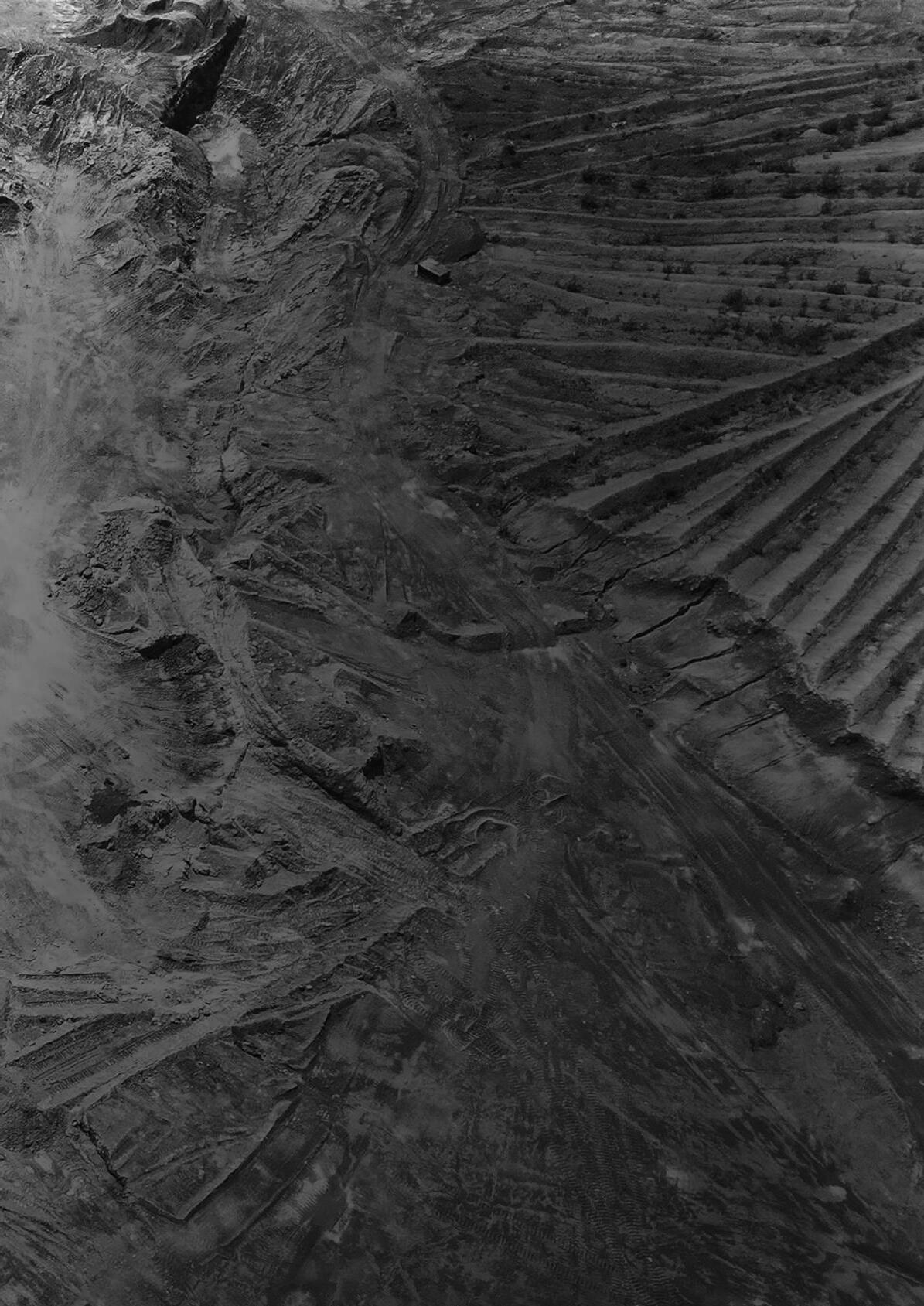
• Bulk Solids Handling & Transport
• Geotechnical Analysis & Materials Characterisation

Fundamental, applied science and engineering of particulate systems to develop faster and more efficient separation technologies for the manufacture, storage and transport of particles.
• Interactions between particles and gas-liquid interfaces
• Hydrodynamics of flotation for enhanced particle recovery, desliming, and throughput
• Development of novel coarse particle flotation technology
• Investigation of ultrafast flotation kinetics using downcomers
• Investigation of turbulent flow structures on particle-bubble detachment
• Enhanced hydrodynamics of complex systems such as foam flows in foam fractionation
• Engineering interfacial behaviour through polymer or surfactant adsorption
• Influence of salts on bubble coalescence and interfacial rheology
• Fundamentals of foam/emulsion stability
• Physical chemistry of complex multi-component systems such as foams and emulsions
• Rational design of novel macromolecular collectors and flocculants
Mathematical/mechanistic modelling and advanced data analytics (machine learning) of multiphase flow systems at micro and macro scales
• Elucidation of the structure-function relationship of collectors and flocculants using advanced scattering techniques
Ultrafast agglomeration using concentrated water in oil emulsions
• Investigation of electrostatic and magnetic forces to achieve fine particle separation
• Combined computational and experimental approaches to revealing the influence of electrolyte identity on the behaviour of complex multiphase systems
• Gravity separation and classification of fine minerals
• Exploitation of centrifugal forces to achieve ultrafine particle separation
• Lean and dense phase particle transport
• Repurposing of tailings
• Dewatering of ore and tailings
• Granulated bed properties
• The Jameson Cell, an innovative flotation unit driven by fluid mechanics using rapid flotation without mechanical agitation
The Concorde™ Cell, which improves fine particle recovery by forcing an aerated slurry through a nozzle to produce a shockwave
• The REFLUX™ Classifier (RC™), which separates fine particles based on density, and based on particle size, including powerful desliming at elevated throughput and separation efficiency
• The REFLUX™ Flotation Cell (RFC™), which operates 5-10 times faster than conventional cells while achieving extreme levels of cleaning
The NovaCell™, which uses a fluidised bed to separate much coarser particles for early gangue rejection in mineral processing to minimise energy consumption in grinding
• Under development, XtractORE™ which uses a concentrated water in oil emulsion as a binder for ultrafast agglomeration of hydrophobic particles
• Under development, the REFLUX™ Graviton which incorporates REFLUX™ Classifier (RC™) modules in a spinning centrifuge to achieve powerful desliming

Advanced characterisation of key feedstocks to ironmaking processes to better understand their production and behaviour during ironmaking.
Comprehensive characterisation of ironmaking raw material quality
• Prediction of coking performance of metallurgical coals using data mining techniques
• Fundamentals of coke reactivity and failure mechanisms
• Fundamentals of sinter formation and drivers of quality
• Synchrotron X-ray, Computed Tomography (CT) and finite element analysis to understand failure of ironmaking raw materials (coke and sinter)
• Synchrotron X-ray and Neutron CT analysis of blast furnace softening and melting experiments to investigate cohesive zone behaviour
• Optimal ore and coal blends
• Definition of optimum technology, operating parameters and blends for new deposits
• Energy efficiency in sintering and cokemaking
• Raw material evaluation for low carbon cokemaking and ironmaking processes
• Direct Reduced Iron (DRI), including hydrogen based DRI, in shaft and fluid bed processes
Renewable additives for cokemaking
Coke and sinter reactivity in hydrogen and oxygen enriched blast furnace operations
• Smelting reduction processes
• Melting of DRI in scrap electric arc furnaces and electric smelting furnaces

• Fundamental physical models for the formation of coke
• Enhanced understanding of coke quality drivers
Comprehensive thermochemical model of the sintering process
• Blend optimisation to improve coke quality and reduce fuel rate
• Demonstrating the enhanced performance of lump and sinter mixed ferrous burden for the blast furnace
• Use of CT structures in computational fluid dynamics models of ironmaking
Product evaluation for low carbon cokemaking and ironmaking
• Evaluating renewable additives for cokemaking
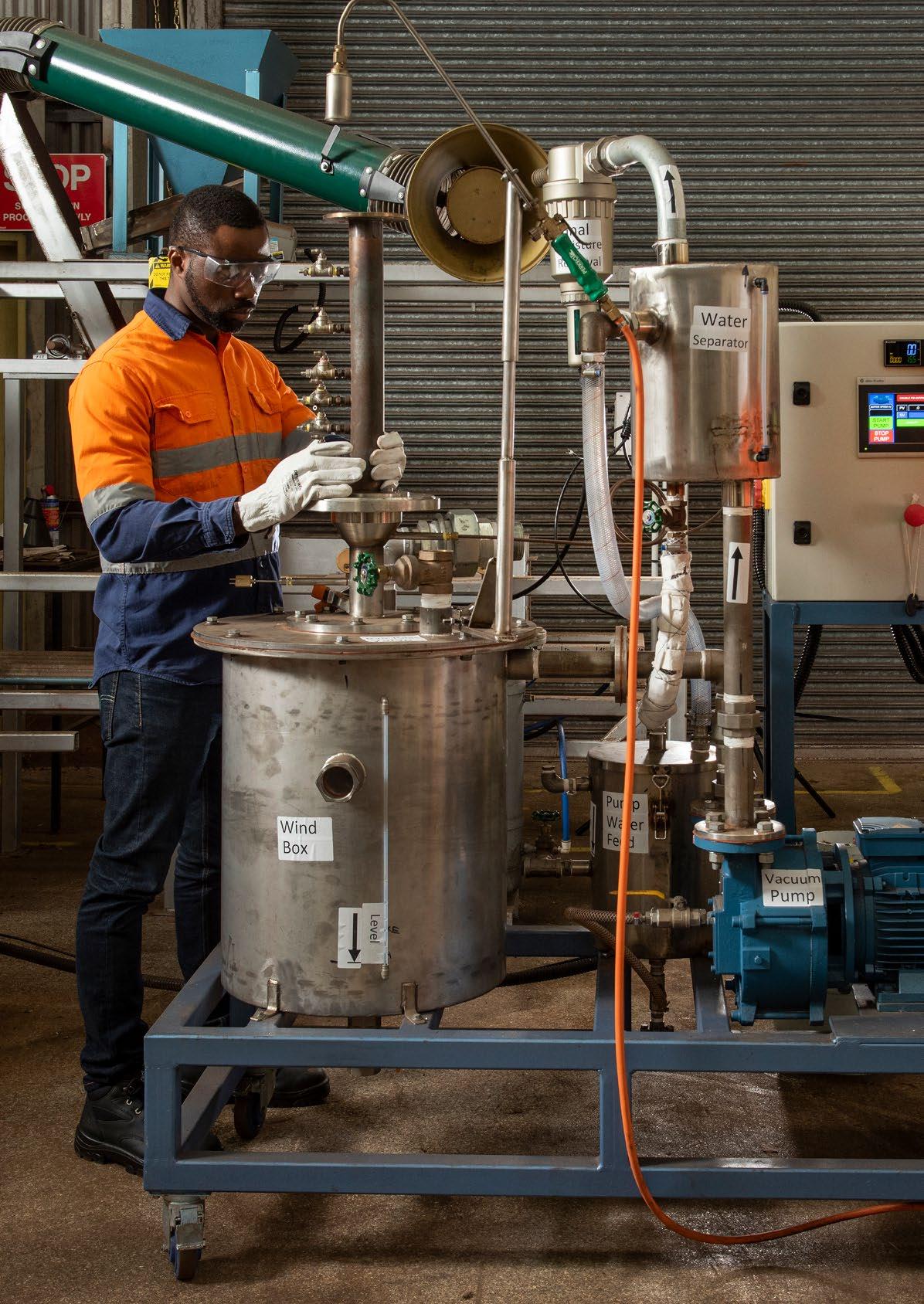

Fundamental and applied research for modern mining challenges, advanced agricultural storage, feed and collection, biomass and waste handling utilisation.
• Fundamentals of bulk solids handling
• Minimising dust and material loss during bulk material transport and storage
• Transportable moisture limits for safe ship transportation of ores and minerals
Granular stress fields and permeability interactions in gassolid flow
• Research into International Maritime Organisation standards for self heating bulk cargo
• Adhesion and flow behaviour in wet and sticky materials
• Vibration effects within bulk material handling systems
• Evolution of moisture migration from oscillatory motion induced by bulk material handling systems
• Pneumatic and belt conveying system design and analysis
• Specialised conveyor belt and idler roll test facilities
• Reducing the energy intensity of overland transport of bulk materials
• Interface of feeders and transfers in problematic material
• Second generation dewatering systems
• Design of utilisation strategies for waste, including mine tailings
• Optimisation and characterisation techniques for biomass materials handling systems and green waste feedstock
• Feedstock interface solutions for second generation ethanol systems
• Estimation and control for complex networked dynamic systems
• Design and development of stockyard management systems
• Data and maintenance planning tools for export supply chains
• Smart sensing technologies for bulk material handling and storage applications
Handling and characterisation of bulk materials in urban mining applications
International Maritime Organisation standards for safe transportable moisture limits for coal exports
• Testing and modelling framework for wet and sticky materials
• Modelling of moisture migration transport phenomena in bulk material handling systems, and train and ship transports
Multi-physics modelling framework under development encapsulating computational fluid dynamics and discrete element modelling with multi-body dynamics, smooth particle hydrodynamics and finite element analysis methods Data analytics, blockchain analysis, machine learning and machine vision strategies for materials handling systems and logistics
• Contributed to Australian Standard for materials handling design, dust minimisation, transportable moisture limits and measuring the energy efficiency of conveyor belts
• Key conveyor design parameters for energy efficient belt conveyors
• VIPER™, a novel dewatering technology that enhances conventional vacuum belt filter technology to increase throughput and lower moisture
The Rail-Running Conveyor™ technology that facilitates low energy use, long distance bulk material transport

Developing new models and innovative computational methods to better predict the behaviour of geomaterials.
• Rock fall analysis and hazard characterisation
• Unsaturated soil mechanics and reactive soil behaviour
• Geotechnical risk assessment in mining and civil environments
• Probabilistic approaches to geotechnical engineering
• Soft soil engineering
• Contact mechanics for soil-structure interaction at large deformation
• Characterisation of mine wastes for management, reuse and disposal
Discrete element method and finite element method numerical modelling of rocks and soils
• Rock joint strength and flow behaviour
• Pumped hydro energy storage geotechnics
• Performance of buried pipelines
Advanced geomaterials testing
Seismic analysis of civil infrastructure projects
• Performance of foundations subjected to dynamic loads
• Monitoring of geostructures
• Big data and data-driven modelling
• Mechanics of soft rocks
• Predictive maintenance of railway track
• Evolving Rockfall Hazard Assessment methodology and computer applications for minesite risk assessment
• Large and small scale custom-built geotechnical testing equipment for soils and rocks
Rockfall risk assessment and management for transportation infrastructure in Australia
• Simulation of large-scale underground openings to predict displacements, fracture paths and the onset of collapse
Evaluation of geotechnical risks associated with pumped hydro development; optimisation of pumped hydro energy storage facilities
• Reliable design parameters for very high waste rock dumps
• Geotechnical field test facility for soft soils in Australia
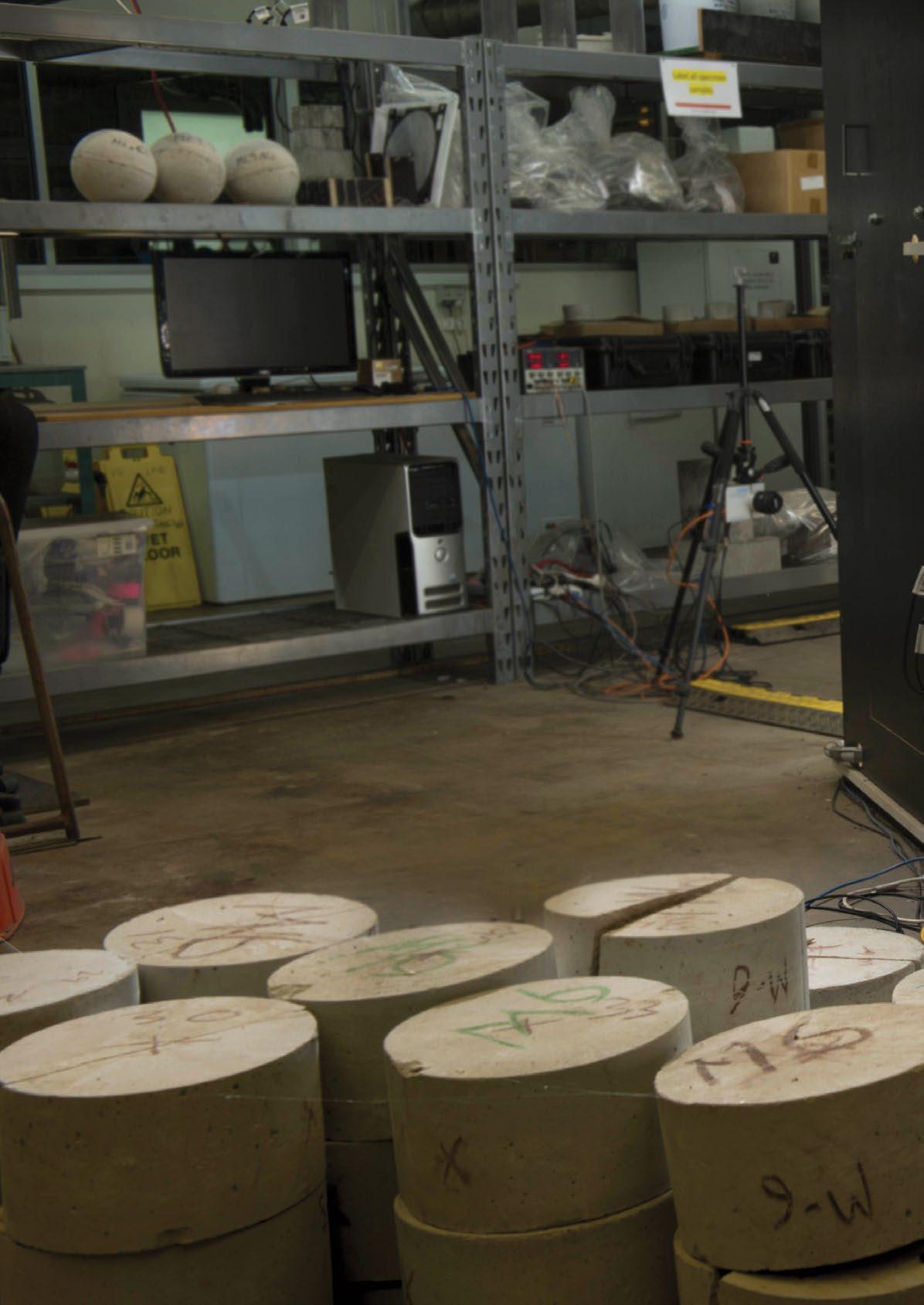
• Guidelines for estimating stress analysis parameters for pipelines
Methods for interpreting low-strain integrity tests on piled foundations
• Effective design of engineered barriers and mitigation measures



DRIVEN BY ECONOMIC AND ENVIRONMENTAL CHALLENGES WITH THE GOAL OF INCREASING EFFICIENCY AND REDUCING GREENHOUSE GASES.
• Low Emission Energy Technologies
• Renewable Energy Systems, Efficiency & Storage
• Fuels, Materials & Energy Utilisation
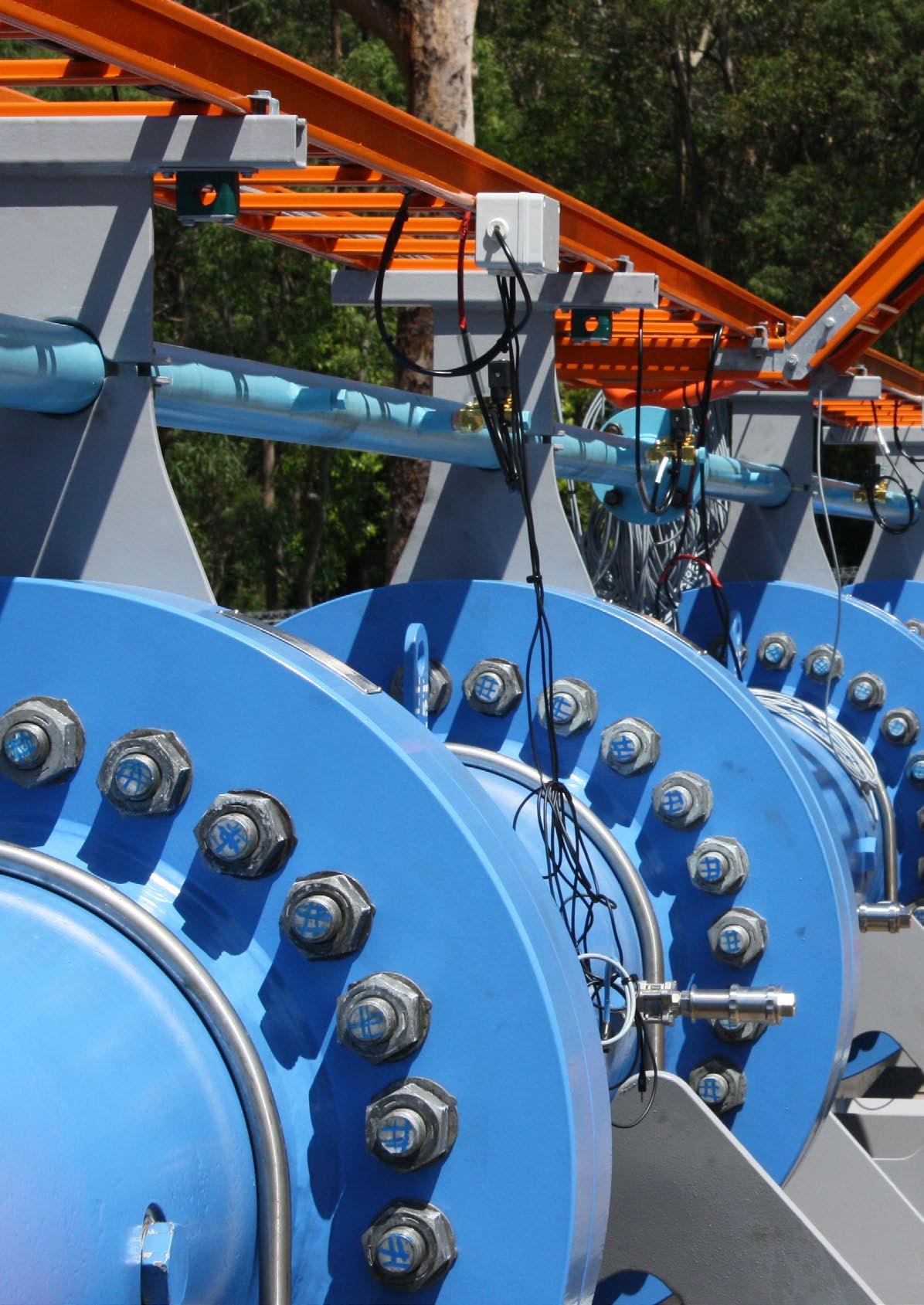
Low emission technology options for mining, process industries and power generation from fossil fuels.
• Ventilation Air Methane (VAM) abatement technologies, safety, deflagration to detonation, chemical looping, stone dust and catalytic reduction of VAM
• Waste heat recovery systems using co-generation plants and heat pumps
• Waste minimisation techniques including biochar, char from coal tailing, and chemical looping of municipal solid waste
• Oxyfuel combustion technology
• Chemical Looping (air separation, combustion, gasification and reforming)
Underground coal gasification
• Ultra low ash coal for direct injection carbon engines and direct carbon fuel cells
Coal and biomass pyrolysis, gasification and combustion
Hybridisation of coal fired power plants, and technologies for geothermal and solar assisted power generation
• Combustion flue gas cleaning technology and smog reduction
• Redox-based thermochemical energy storage
• Hybrid phase change redox based thermochemical energy storage
• Calcination based thermochemical energy storage
• Low-emission technologies for sustainable well dewatering

• Large scale demonstration detonation tube for capturing fugitive methane from underground coal mining operations
• Ventilation Air Methane (VAMCO) technology for abatement of greenhouse gas emissions
• The GRANEXTM Heat Engine, a supercritical Rankine cyclebased heat engine specifically designed for waste heat recovery from low-grade heat sources
Pressurised regenerative calcium cycle energy storage prototype
• Chemical Looping Air Separation (CLAS) energy on demand system
• Foam assisted gas lift - a novel, sustainable artificial lift system for dewatering wells, replacing downhole pumps
Energy technology platforms for sustainable development.
Hydro Harvester technology for atmospheric water generation
Use of water generated by Hydro Harvester in green hydrogen production
• Renewable energy systems for biomass and biosolids utilisation including co-firing chemical looping gasification, direct and indirect geothermal technologies, and small wind systems
• Hybrid energy systems including geothermal assisted power generation, solar assisted power generation and geothermal solar
• Pyroelectric and thermoelectric energy harvesting
• Building thermal efficiency with passive solar systems
• Micro energy systems including micro hydrogen generators
• Energy efficient desalination
• Energy efficient wastewater treatment plants involving aeration power reduction, dewatering and enhanced oxygen transfer efficiency
Metallurgical processing such as slag granulation and inclusion reduction
• Utility scale and microgrid scale energy storage involving calcium looping, phase-change chemical looping and ilmenite looping
GRANSAL portable and compact desalination technology using closed loop helium based humidification–dehumidification desalination
• Carbon arrestor pyrolyzer for biochar making
• Sorbent chemical looping gasification of biomass and organic waste

• Village-scale bio-digester for biogas production from organic waste
Hybrid high thermal mass walling system
Hydro harvesting units converting water from ambient air
Utility scale energy storage
• Energy on demand microgrid scale energy storage
• Hydrogen production through pyrolysis of biomass
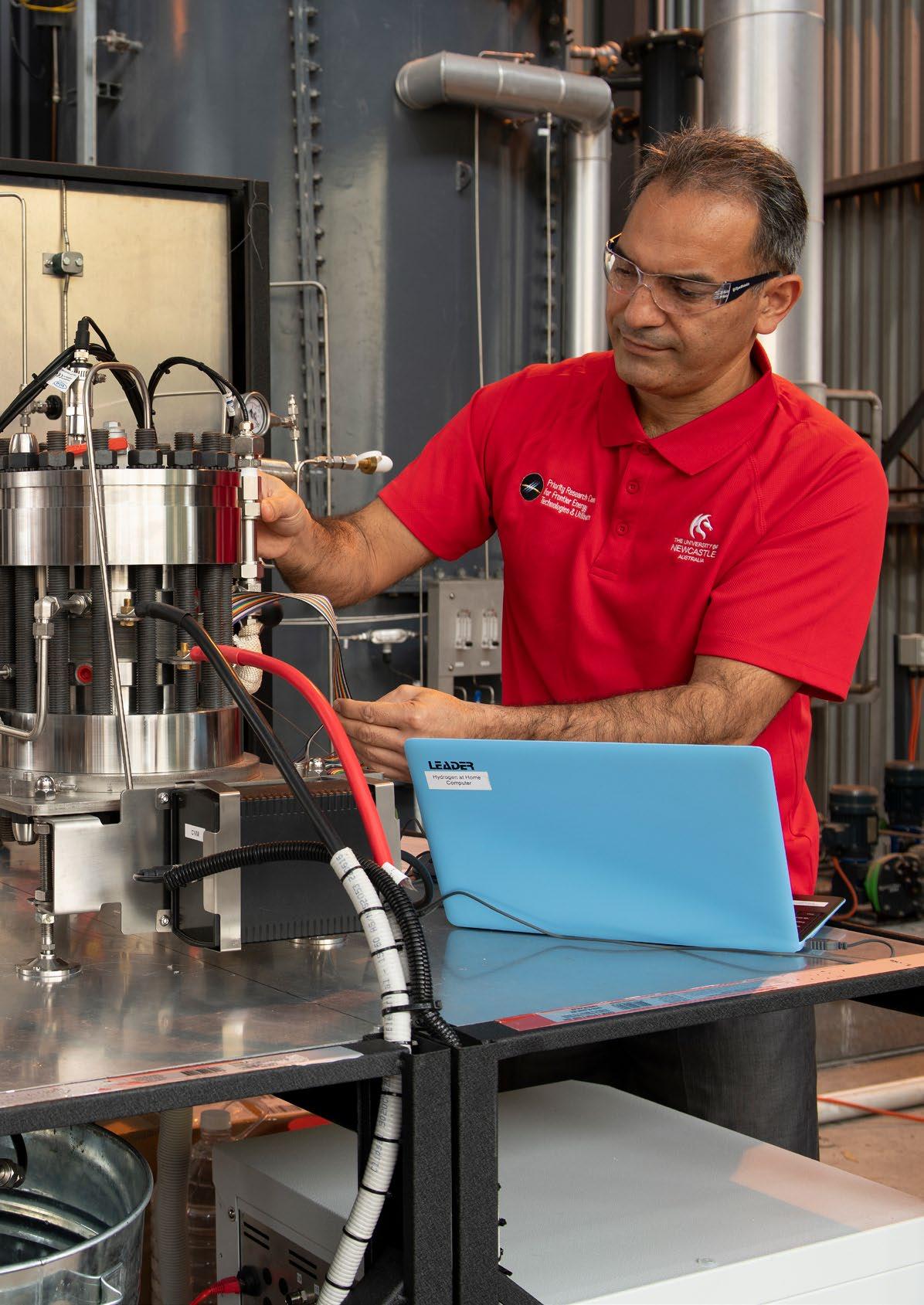

Novel options for carbon capture and storage, transportation fuels, energy conversion and fuel utilisation in non-energy applications.
• Sustainable aviation fuels
• Development of technologies for green ammonia synthesis and reforming
• Development of membrane reactor-based hydrogen purification systems
• Novel options for carbon dioxide capture and storage using mineral carbonation and post combustion capture
Transportation fuels from coal and biomass to liquid and energy carriers
Energy conversion techniques using direct carbon fuel cells and advanced materials for batteries and super capacitors
Fuel and material utilisation in manufacturing, process, and chemical industries such as coking coal in ironmaking and carbon dioxide utilisation for food industries, enhanced oil recovery, chemicals and fire suppressants
• Environmental repair and pollution abatement including the development of energy efficient contaminated soil treatment
• Integrated waste processing and utilisation with recovery and generation
• Life cycle analysis and sustainable waste processing
Advanced coke oven manufacturing carbon utilisation processes
Carbon nanofibres from coal
• First generation batch plant demonstrating carbon utilisation for building products such as concrete and plasterboard

• Soil remediation technology
• Carbon nanofibre prototype system
Advanced testing facility for evaluating the combustion performance of thermal coal for coke making
• Energy harvesting from CO₂ capture
• Development of ionic liquids to capture CO₂
• Combined carbon capture from flue gas streams and mineral carbonation
• Processes to reduce the formation of dioxins in the sinter plant


UNTAPPING THE POTENTIAL FOR NEXT GENERATION LOW COST SUSTAINABLE APPLICATIONS.
• Electrochemistry & Materials Engineering
• Advanced Nanomaterials
• Organic Electronics
Enhancing the performance of materials for industrial application.

• High temperature direct carbon fuel cells
• Electrochemical capacitors
• Battery systems
• Recycling of spent battery materials
• Biochar for environmental purposes
• Energy storage and conversion
• The theory and simulation of atomic diffusion and thermodynamics in solids
• Solar thermal energy storage materials with high energy density and high thermal conductivity
• Failure prediction, prevention and enhancement of steel structures in corrosive environs
• Micro batteries for medical applications
• Demonstration scale direct carbon fuel cell
• High energy, thin film electrochemical capacitors
• Improved efficiency cathode-active battery systems
• Effective battery recycling strategies
• Slow release nitrogen fertilizer based on biochar to reduce soil N₂0 emissions
• Biochar as a heavy metal adsorbate


• Advanced nanocatalytic materials for hydrogen production from seawater
• Nanostructured carbon-based materials for carbon dioxide capture and conversion
• Novel nanomaterials-based electrode materials for battery and supercapacitor applications
• Nanoporous metal chalcogenides for photocatalytic applications
Nanoporous fullerenes as metal free electrodes for supercapacitors and batteries
• Graphenes, carbon dots, quantum dots and carbon nanospheres for energy and sensing
• Controlling the structure and pore diameters of nanoporous carbons for hydrogen, methane and energy storage
• Nanoporous electrocatalytic materials for fuel cells
• Heteroatom-doped carbon and carbon nitride nanostructures for next generation low cost energy storage and conversion integrated systems
• Natural biomass derived activated porous carbons for selective carbon capture and soil remediation
• Crystalline and amorphous metallosilicate and heteropoly acids for fine chemical synthesis
• Hydrogenation, dehydrogenation, hydrocracking, hydroisomerization, alkylation, acylation, oxidation of large organic compounds and CO₂ utilisation and conversion
• Ammonia production from NOX for coal fired power plants
• Nanoporous biomolecules for sensing, enzymatic catalysis and drug delivery
• Production of nanozinc and other pharmaceutical products using a nanotechnological approach
• Core-shell porous silica based nano-medicines, bio-vehicles and bio-reservoirs – drug delivery systems for cancer diagnosis and treatment
• Nanoporous carbon based sensors for toxic carcinogens, glucose and other pathogens
• Alternate and low cost renewable energy sources for household applications
• Clean and low cost hydrogen fuel for on board storage in transport applications
• Low cost, high energy density portable energy storage device
• Low cost fuel cells
• Low cost and compact batteries with shorter charging time and high energy storage
• Low cost and compact solar cells for energy conversion
• Alternate solid state-based low cost adsorbent for CO₂ capture
Catalytic conversion of CO₂ to value added chemicals including alcohols, ethers and polymers
• Pre and post processing of crude oil, petroleum products and by-products
• On demand targeted drug delivery and early stage cancer detection and therapy
• Fine chemical production for cosmetics and pharmaceuticals
Sensing and detection of toxic vapours and molecules
Clean hydrogen fuel production from organic hydrides for the efficiency of coal fired power plants
Emerging nanomaterials-based technologies for energy, environmental and health related applications.
Delivering the next generation of environmentally friendly energy sources, photonics and biosensors.
Large-scale manufacturing of sustainable renewable energy systems
• Large-scale manufacturing of point-of-care diagnostic systems
• Optimisation, characterisation and upscaling of aqueous solar nanoparticle inks for organic photovoltaics and biosensors
• Femtosecond laser studies of charge generation and conduction mechanisms in organic photovoltaic devices
Long-term stability and life prediction techniques for solar cells and modules
• Services in the production of research quantities of speciality nanostructured materials such as electronic polymers and macromolecules for applications including organic light emitting diodes, organic photovoltaics, polymer actuators, non-conventional organic electronics applications, batteries and energy storage materials
Industrial web printing of organic electronic materials and devices
• Industrial continuous web deposition of metals, inorganic and dielectric materials
• Surface analysis and characterisation of novel materials and devices
• Synchrotron photoelectron spectroscopy and microscopy of materials and devices
Thin film and chemical vapour deposition of speciality nanostructured materials and devices
• Design, development and fabrication of nanostructured electronic materials and devices
• Design, development and application of neutral atom microscopy instruments
• Printed Solar; novel ultralightweight photovoltaic technology
• Printed Transistors; novel flexible low-cost biosensor technology
• Polymer and plastic based electronic materials and devices
Glucose Biosensor – printed sensors for saliva-based glucose testing
• Hydration Biosensor – printed sensors for sweat-based hydration testing
• Commercial scale Printed Solar demonstration
• Public demonstration of Printed Solar
• Scanning Helium Microscope (SHeM) – world-first damage-free imaging system



BALANCING ENVIRONMENTAL, COMMUNITY AND ECONOMIC ACTIVITY IN RESOURCE INTENSIVE REGIONS.
• Water, Soil & Climate

• Land Use Management, Environmental Remediation & Social Impacts
• Food & Agriculture
• Coastal & Marine Science
• Resources Health & Safety

Understanding, monitoring, and modelling hydrological, soil, and climate processes to optimise infrastructure and policy development and maximise environmental, social, and economic benefit.
Interactions and feedbacks between hydrology, ecology, landforms and river/catchment processes

• Impacts of climate variability and human pressure on water and land
• Rehabilitation of wetlands, in-stream and estuarine ecology
• Ecogeomorphologic, soil and landscape rehabilitation of mine sites
• Flood, drought, fire and storm risk assessment
• Soil carbon and carbon accounting
• Quantification and management of climate-related risks
• Riverine, hydrodynamic and ecological processes
• Remote sensing of forested and grassland ecosystems’ function and soil moisture
• Simulation and optimisation of complex water resource systems
Hydraulic modelling and river transport processes
Stochastic models of climate variability
• Hydrology, climatology and palaeoclimatology
• Soil and landscape modelling
• Sediment transport, water quality and salinity
• Water-energy nexus
• Climate change modelling and adaptation
• Seasonal to decadal climate forecasting
Sustainable mine site rehabilitation using EAMS-SIBERIA, an erosion assessment modelling system
• Development of unique instruments for determining multi-objective optimisation capabilities of water supply infrastructure in the urban water sector
Climate change impacts, vulnerability and adaptation strategies for the sustainable management of coastal and inland wetlands
• Flood and hydrodynamic modelling
• River and bank erosion assessment tools
• Landscape evolution and function assessment tools
• Flood frequency estimation software
• Risk-based approach to hydrological and economic modelling and associated long-term water supply planning
• Computer models to assess environmental impacts and management of disturbed ecosystems
• Risk-based land management
• Assessments for contaminant life cycle, speciation and toxicity, ecological and human health, bioaccessibility/ bioavailability and post mining rehabilitation design
Waste characterisation and pathways for waste to resources
Innovative remediation methods for contaminated soil and groundwater
• Advanced waste water treatment technologies and water recycling systems
• Strategies to enhance social licence to operate
• Cumulative impacts of multiple developments on air, land, soil and water resources
• Enhanced models for community participation in decisions about land use, coexistence and the sustainability of critical regional industries
• Final void behaviour and the impact of final void filling and post mining land use
• Environmental and water impacts of coal seam gas extraction
• Science and technologies to improve water management
• Alternative policy frameworks for biodiversity offsets
• Indicators of ecosystem structure and function
• Phenomenology of land use
Climate induced displacement and resettlement
Regional planning, economic development and social determinants of health
• Field implemented remediation technologies at hydrocarbon contaminated sites
• Remediated perfluorochemical contaminated soils and water
• Novel analytical methods for contaminant speciation in soil and water
Novel reclamation technologies for degraded lands and mine sites
• New technologies for nationally significant aquifer contamination
• Development of a long term land form and rehabilitation assessment and design tool using erosion assessment modelling system EAMS-SIBERIA
Geomorphic landform design tool
Methodologies for assessing long term water quality in final voids
• Methodologies for assessing long term impacts on groundwater levels from mine dewatering and coal seam gas extraction
• Methodologies for assessing the safety of fracking of coal seam gas wells
• Modelling bio-economy to achieve zero carbon systems
Qualitative methodologies for understanding experiences of and attitudes to land use change
• Ethnographic, qualitative and mixed-method research that enables a holistic analysis of the multifaceted issues and scales of land use and land use change

Focused on the balance between environmental, community
economic activity in energy and resource intensive regions.


Technological and scientific innovations to secure healthy, quality foods from more sustainable, efficient and resilient food processes.
• Food safety testing and extending the shelf life of fresh produce
• Food health relationships for growth markets, including personalised nutrition, weight control and ageing
• Food composition and its influence during processing, transportation, and storage
• Development of functional ingredients and functional food/ healthy supplements
• Post-harvest technologies for shelf life extension of fresh produce
• Innovative food packaging and development of new food products
Consumer food behaviour and food labelling
• Optimising digital and physical food environments for healthy and sustainable choice
Application of Artificial Intelligence and Internet of Things on food processing and preservation
• Processing and preservation of seafoods and sea materials (sea grasses, algae, sea sponges)
• Novel strategies for extraction of bioactive compounds from food wastes
• Waste control and utilisation
• Climate change resilience and resource sustainability, including food waste conversion, water management technologies and transport solutions
• Optimising food intake behaviours and diet related health across life stages and health conditions
• Reducing costs through optimising the shelf live and supply chain
• Developing new food products and improving quality of foods using functional ingredients
• Cross-sectional studies, surveys, clinical trials, qualitative and mixed methods research, and data analyses to investigate acceptance and impact of new food products, services, and technologies
• Sensory testing of new food products
• Food innovation laboratory facility access for research purposes
Research and method consultation services for food, nutrition, and consumer studies
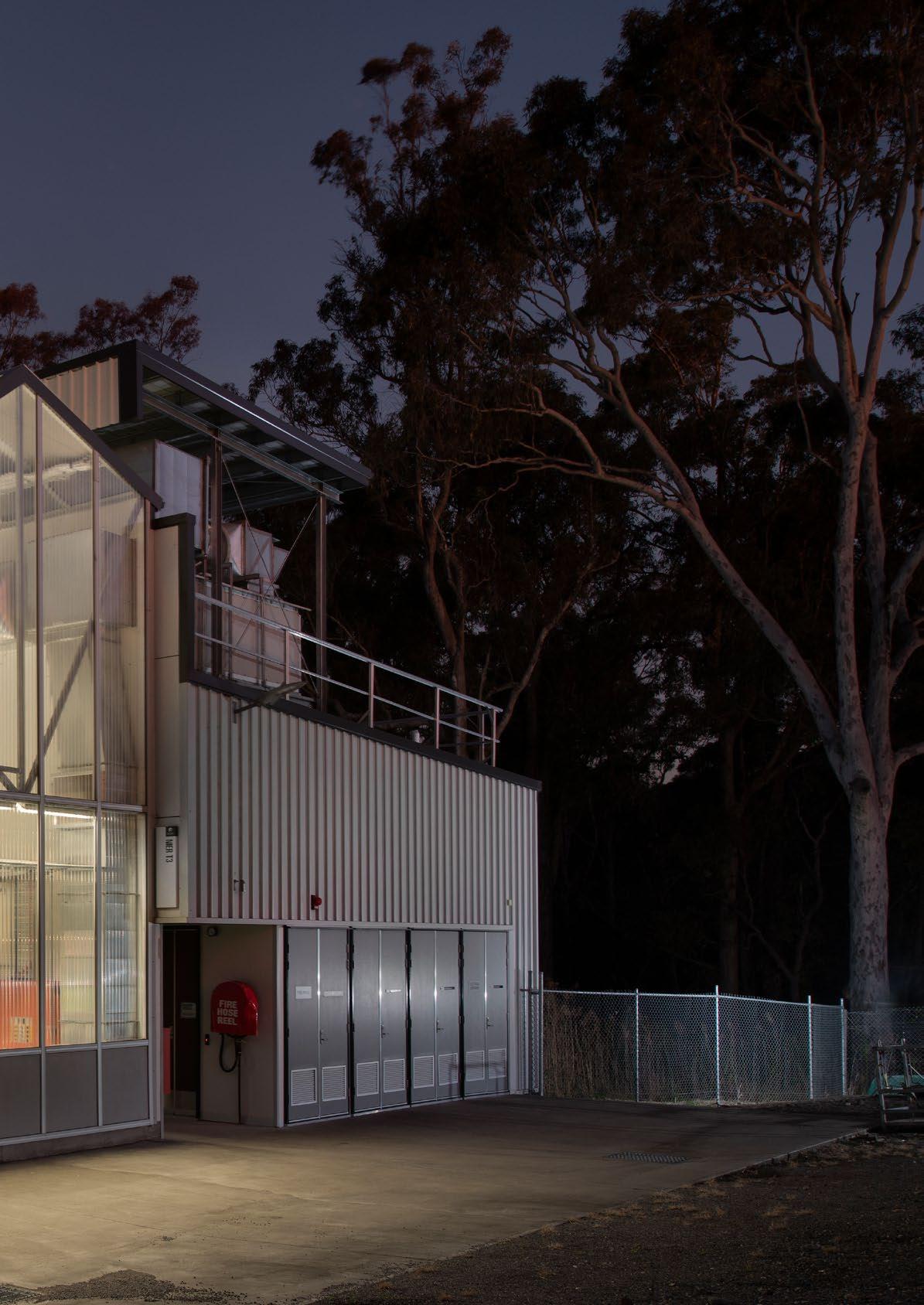
• Physical and biological processes that occur in coastal ecosystems
Social values and management strategies with a particular emphasis on sustainable use, conservation and protection of our natural resources
• Metals in estuarine and marine systems
• Marine molluscan models for impact assessment of estrogenic endocrine disrupting chemicals
• eDNA survey techniques to monitor aquatic wildlife populations
Populations genomics and connectivity of marine species
Food web dynamics of estuarine, coastal and marine systems
Fish habitat use and behaviour
• Microbiome of water, habitats and organisms as indicators of ecosystem health
Rehabilitation of saltmarsh systems
Remote technologies, such as sonar and drones, for monitoring physical and biological systems in waterways and catchments
• Coral reef biodiversity, health and monitoring

• Metabolomics as a sub-lethal stressor of aquatic and marine organisms
• Marine soundscapes and their relationship with estuarine and marine communities
Methods to reduce overcatch and contamination in oyster and mussel aquaculture
• Fisheries bycatch reduction methods
• Impacts of environmental pollution and other events on coastal marine environments and systems
• Accumulation pathways and selected mechanisms of tolerance to metals by mangroves
Reliable biomarkers of metal stress in mangroves including photosynthetic performance, gene expression markers and the oxidative stress markers
• Protocols to prioritise on-ground works for habitat rehabilitation
Optimisation of oyster and mussel aquaculture production methods
• Biodiversity surveys for regulatory reporting
Identifying habitats that support fishery production for coastal and estuary managers
• Prioritising foreshore stabilisation for ecological benefits
• Biomonitoring of waterways to determine sublethal effects of catchment impacts
• Evaluation of catchment management actions on waterway health
Undertaking research to support the sustainable use and conservation of the living resources of catchments, coasts and marine environments.


Extending the traditional concept of health and safety to the resources industry.
Interventions to reduce risk and hazardous behaviour in mining

• Development and implementation of self-management programs and virtual health systems to improve mental health, and reduce fatigue, alcohol and other drug related problems in mining
• Providing evidence regarding psychological wellbeing and alcohol use in various mining settings
• Evaluating suicide prevention in the construction industry Task rotation in underground coal mine sites
• Characterising the epidemiological and biological effects of particulate matter exposures in coal mining to protect and improve the health of workers
Health service delivery and health practitioner training in remote areas
• Comparisons of barriers and enablers to implementing national, industry and sector workplace programs,
• The feasibility, acceptability and effectiveness of online therapy for the treatment of mood, alcohol and other substance use concerns in contemporary Veterans
'Working Well' mental health in mining workplace programs
• 'Mates in Mining' mental health intervention program in Australian mines in partnership with Mates in Construction and Everymind
• National Blueprint for Mental Health and Wellbeing in conjunction with the Minerals Council of Australia
Uptake of the National Blueprint for Mental Health by the Chamber of Minerals and Energy of Western Australia
Blueprint for the Management of Overweight and Obesity in the NSW Mining Industry
Cutting edge technologies to assess all major components of rock fall hazards, to ensure a safer mining environment
A virtual health system to improve mental health, reduce fatigue, alcohol and other drug use related problems in mining
NIER’s impact comes from the platform of collaborative engagement we offer and the partnerships we form. These partnerships allow us to connect ground-breaking ideas to local, national and global need, and deliver research solutions for a more sustainable future.

www.newcastle.edu.au/nier
+61
